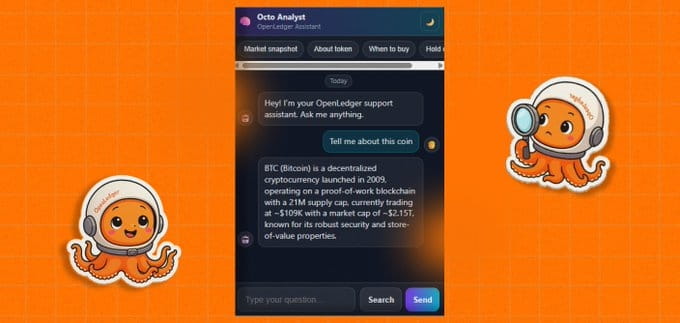Bridge: The Lifeline Connecting Ethereum and @OpenLedger $OPEN
In the Web3 ecosystem, interoperability is the key to unlocking real value. For OpenLedger, a novel decentralized AI economy (Liquid AI), establishing a solid bridge with Ethereum – the largest and deepest liquidity blockchain network – is not just a utility but a strategic requirement for survival and growth.
This bridge will serve as the economic bloodstream, allowing seamless circulation of assets and data, transforming OpenLedger into a true "AI Liquidity Layer" in the broader Ethereum ecosystem.
Strategic Importance of the Bridge
Integrating Ethereum and OpenLedger brings multi-dimensional benefits to both networks:
Liquidity Absorption: Ethereum is where most of the DeFi capitalization and assets are concentrated (e.g., ETH, stablecoins, Wrapped BTC). The bridge allows Ethereum users to transfer this enormous capital to OpenLedger for staking, providing liquidity, or purchasing Tokenized AI Model Assets. This provides abundant seed capital for the OpenLedger economy.
Expand AI Utility: Decentralized applications (dApps) on Ethereum can easily access and utilize OpenLedger's specialized, low-cost AI services (thanks to OpenLoRA). For example, a DeFi protocol can use a risk prediction model trained on OpenLedger, paying with ERC-20 tokens, and transactions are processed quickly through the bridge.
Attract Community & Developers: The bridge allows token holders $$OPEN to participate in DeFi protocols on Ethereum and vice versa. It attracts Ethereum developers to build application layers on OpenLedger, reinforcing OpenLedger's position as an economic infrastructure for AI.
Bridge Mechanism
The bridge between Ethereum (Network A) and OpenLedger (Network B) primarily operates under the Lock-Mint/Burn-Release model, with additional security mechanisms:
1. Token Transfer
Transfer from Ethereum to OpenLedger: Users send ERC-20 tokens (e.g., $$OPEN RC-20) to a Lock Contract on Ethereum. This contract locks the tokens. Then, an equivalent amount of native tokens or wrapped tokens is minted on OpenLedger.
Transfer from OpenLedger back to Ethereum: Tokens are burned on OpenLedger. Proof of the burn is sent to the Lock Contract on Ethereum, releasing the original ERC-20 tokens for the user.
2. Verification Layer
To ensure integrity, the bridge needs an independent verification mechanism:
Use Relayers and Validators: A network of Relayers and Validators (usually those staking $OPEN tokens) will monitor lock/burn token events on both chains.
Proof of Event: Validators will sign and send cryptographic proof of transactions on the source chain to the destination chain.
Light Client or Trusted Third Party: Depending on the architecture, the bridge can use Light Clients on each chain to directly verify the state of the other chain, or rely on a set of Independent Validators (Trusted Third Party) to handle and secure the transfers.
In the case of OpenLedger, integrating its existing network of Validators (participants in the fine-tuning process of the model) into the operation of the bridge is a viable option to enhance decentralization and security.
Challenges and Potential Solutions
Building a bridge is one of the most technically challenging and risky tasks in Web3.
Challenge Description & Risks Potential Solutions for OpenLedger Security risks Bridges are often the only single point of failure that can be exploited through Smart Contract errors or manipulation by Validators. Use a strong Multi-Signature (Multi-Sig) or Decentralized Governance model to approve large transactions.
Integrate specialized auditing and security tools. User Experience High gas fees, slow processing speed, and complex interfaces reduce usability. Optimize fees through Batching (transaction aggregation) mechanisms. Provide an intuitive, user-friendly interface that hides the complexity of cross-chain transactions.
Decentralization Relying on a small group of validators can lead to a concentration of power and censorship. Ensure a large and diverse Validator pool. Use the $OPEN staking mechanism with strict penalties (slashing) for fraudulent behavior.
In summary, the bridge between Ethereum and @OpenLedger is a strategic gateway that transforms AI models into liquid assets, enabling easy access to capital and the Ethereum community. By prioritizing security, decentralization, and user experience, OpenLedger can succeed in creating the "AI Liquidity Layer" that the Web3 community has been waiting for.
@OpenLedger #OpenLedger #open






